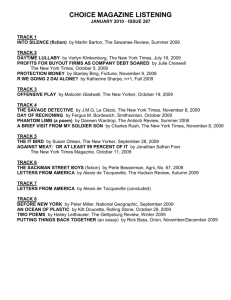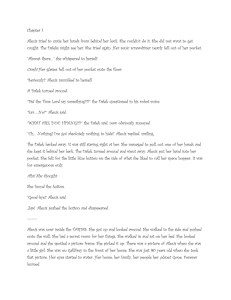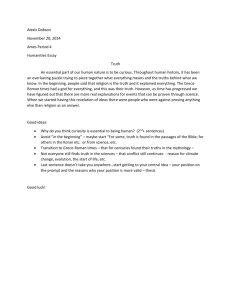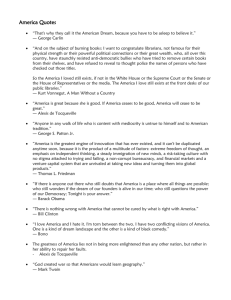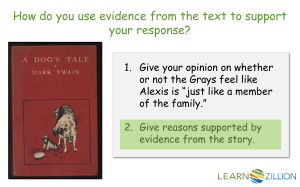Base-Ten Knowledge Interview
advertisement
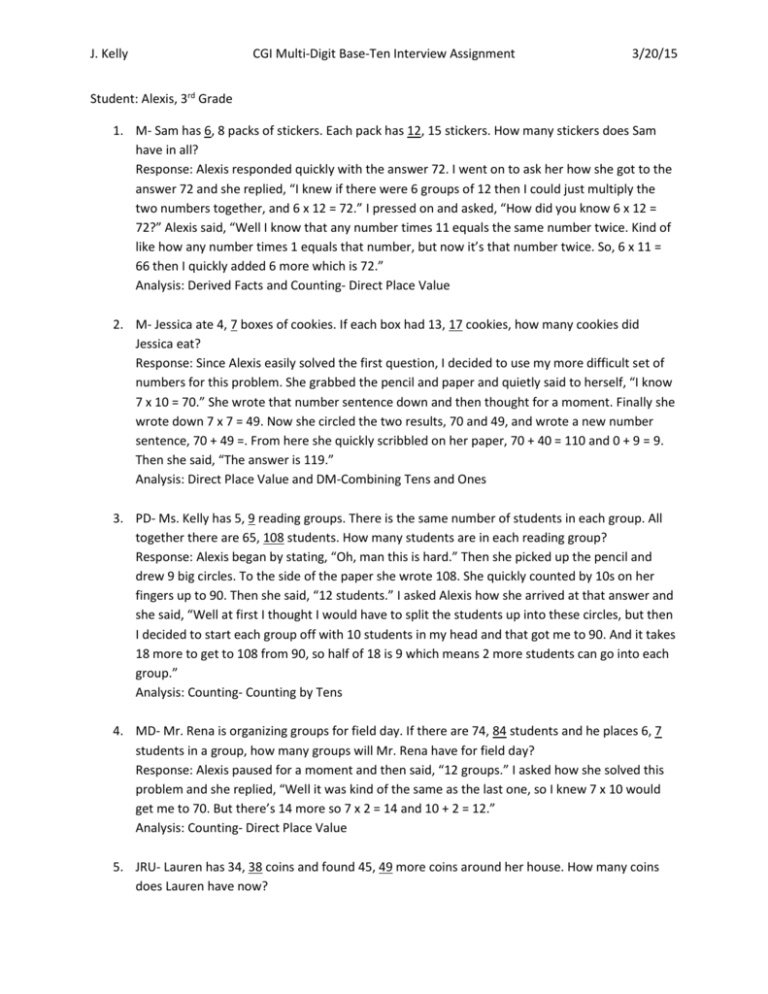
J. Kelly CGI Multi-Digit Base-Ten Interview Assignment 3/20/15 Student: Alexis, 3rd Grade 1. M- Sam has 6, 8 packs of stickers. Each pack has 12, 15 stickers. How many stickers does Sam have in all? Response: Alexis responded quickly with the answer 72. I went on to ask her how she got to the answer 72 and she replied, “I knew if there were 6 groups of 12 then I could just multiply the two numbers together, and 6 x 12 = 72.” I pressed on and asked, “How did you know 6 x 12 = 72?” Alexis said, “Well I know that any number times 11 equals the same number twice. Kind of like how any number times 1 equals that number, but now it’s that number twice. So, 6 x 11 = 66 then I quickly added 6 more which is 72.” Analysis: Derived Facts and Counting- Direct Place Value 2. M- Jessica ate 4, 7 boxes of cookies. If each box had 13, 17 cookies, how many cookies did Jessica eat? Response: Since Alexis easily solved the first question, I decided to use my more difficult set of numbers for this problem. She grabbed the pencil and paper and quietly said to herself, “I know 7 x 10 = 70.” She wrote that number sentence down and then thought for a moment. Finally she wrote down 7 x 7 = 49. Now she circled the two results, 70 and 49, and wrote a new number sentence, 70 + 49 =. From here she quickly scribbled on her paper, 70 + 40 = 110 and 0 + 9 = 9. Then she said, “The answer is 119.” Analysis: Direct Place Value and DM-Combining Tens and Ones 3. PD- Ms. Kelly has 5, 9 reading groups. There is the same number of students in each group. All together there are 65, 108 students. How many students are in each reading group? Response: Alexis began by stating, “Oh, man this is hard.” Then she picked up the pencil and drew 9 big circles. To the side of the paper she wrote 108. She quickly counted by 10s on her fingers up to 90. Then she said, “12 students.” I asked Alexis how she arrived at that answer and she said, “Well at first I thought I would have to split the students up into these circles, but then I decided to start each group off with 10 students in my head and that got me to 90. And it takes 18 more to get to 108 from 90, so half of 18 is 9 which means 2 more students can go into each group.” Analysis: Counting- Counting by Tens 4. MD- Mr. Rena is organizing groups for field day. If there are 74, 84 students and he places 6, 7 students in a group, how many groups will Mr. Rena have for field day? Response: Alexis paused for a moment and then said, “12 groups.” I asked how she solved this problem and she replied, “Well it was kind of the same as the last one, so I knew 7 x 10 would get me to 70. But there’s 14 more so 7 x 2 = 14 and 10 + 2 = 12.” Analysis: Counting- Direct Place Value 5. JRU- Lauren has 34, 38 coins and found 45, 49 more coins around her house. How many coins does Lauren have now? J. Kelly CGI Multi-Digit Base-Ten Interview Assignment 3/20/15 Response: Alexis sat for a minute until she responded, “88,” As I began to ask how she got that answer she quickly said, “No, I meant 87.” Then Alexis said, “49 is pretty much like 50 so I added the 30 onto it and got 80. But I still had to add the 8 on and I got 88, but I forgot I needed to take 1 away since it was 49 not 50.” Analysis: Counting- Compensating 6. JRU- Sophia read 29, 56 nonfiction books and 34, 54 fiction books. How many books did Sophia read altogether? Response: Alexis said 110 fairly quickly. I asked how she knew that so quickly and she said, “It was easy. 50 +50 = 100 and 6 + 4 = 10 so it had to be 110.” Analysis: Counting- Combining Tens and Ones 7. SRU- Ryan had 78, 90 pencils. Then he gave 26, 37 of his pencils to classmates. How many pencils does Ryan have now? Response: Alexis talked herself through this one saying, “He has 90 pencils and gave 37 away. 9 minus 3 is 6. 60. 7 + 3 = 10. 53.” I was confused by this so I asked her to explain her thinking. Alexis said, “Well 90 minus 30 is 60. And I still needed to minus 7, since 7 and 3 make 10 I minused 10 and added the 3 back on.” Analysis: Counting- Incrementing 8. SRU- Ben picked 37, 42 apples and ate 21, 17 of them. How many apples does Ben have left? Response: Alexis wrote the number sentence, 42-17 onto her paper and began to solve by place value then stopped and erased it. Next, she drew a number line and represented 42 on the right side of the number line and jumped back 10 and got 32. Then she jumped back 2 and got 30. Next she jumped back 5 and got 25. Finally she said, “The answer is 25.” Analysis: DM- Incrementing Summary: This student excels in math! Alexis answered all of these questions correctly using knowledge of base-ten. She used counting by 10s, direct place value, incrementing, combining tens and ones and compensating. I was very impressed with her flexibility in using a variety of strategies. I began with the easier set of numbers to get an idea of where she’s at from there I chose my harder set of numbers for every problem. My range of numbers went from 6 to 119. Alexis showed base-ten understanding in each problem, but one specific example is in problem 2 when she decomposed the 17 and multiplied 7 by the 10 first then by the 7 secondly. From there she knew she needed to add 70 and 49 together, so she added the two by place value. Instructional Decision: From here I would ask Alexis a Multiplicative Comparison Partitive Division word problem. This would make the word problem more challenging for her and get an idea if she can transfer her base-ten knowledge to more difficult problems. The yellow house is 86 feet tall. It is 3 times as tall as the blue house. How tall is the blue house?
